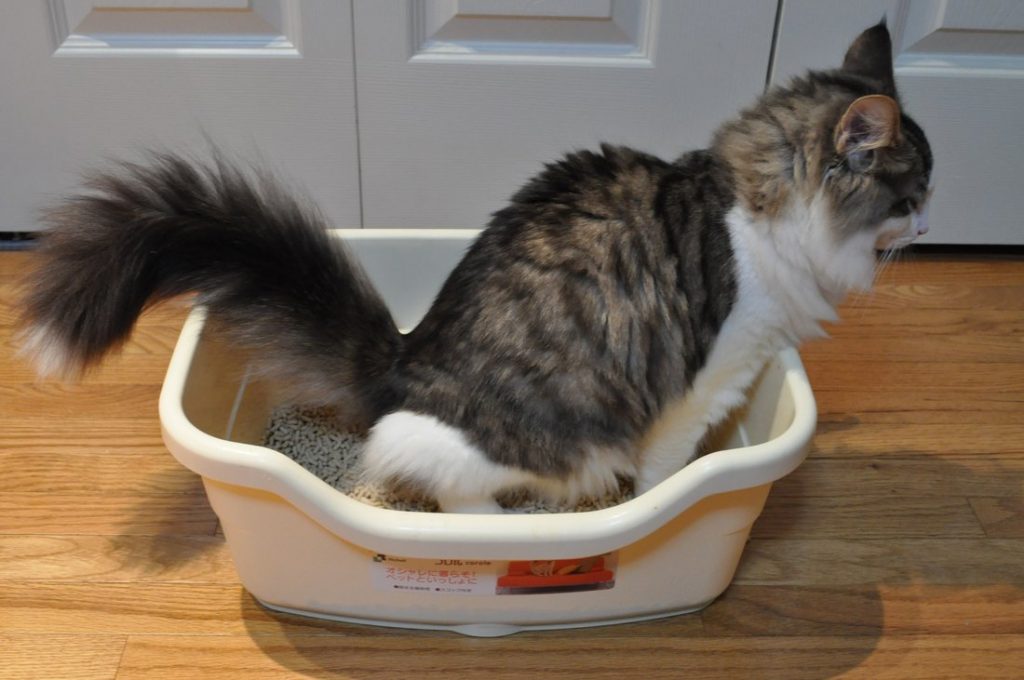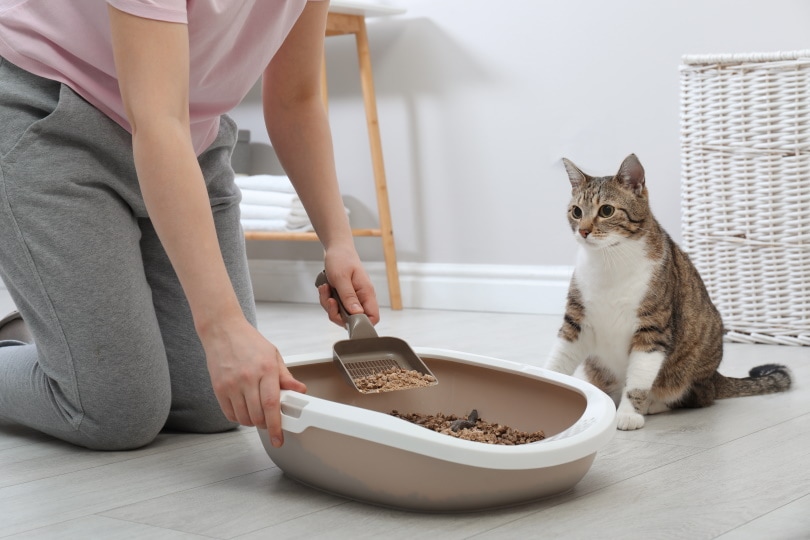Hello, my fellow cat enthusiasts! If you’re anything like me, leaving your feline friend at home while you travel can be distressing. As an experienced cat parent, I’ve often faced this daunting question: “How long can a cat journey without peeing?”. I understand your concerns, so I’m thrilled to share my insights. Whether you travel with your cat on a long-distance journey or are simply curious about their bathroom habits, this comprehensive guide covers you. So, let’s dive into the world of cat pee and travel!
Table of Contents
The Mystique Behind Cat Pee: When Do They Need to Go?
How Long Can Cats Go Without Urinating?
As independent and resilient animals, cats can generally hold their pee for about 24 to 48 hours. However, this doesn’t mean leaving your cat without access to a litter box for an extended period is advisable. It’s essential to understand the factors that can influence a cat’s ability to hold their pee and to be attentive to their needs, especially during travel or changes in routine.
Why Feline May Hold Their Pee Longer?
Stress and Anxiety
Travel can be stressful for cats, as they are creatures of habit. The unfamiliar environment and movement might cause them to hold their pee.
Medical Conditions
Conditions such as Cystitis or feline lower urinary tract disease may cause discomfort or pain, making them reluctant to urinate.
Lack of Suitable Spot
Cats are picky! They might avoid relieving themselves if they don’t find the litter box conditions up to their standards.

The Essentials You Need to Travel
Pre-Travel Vet Check: Better Safe Than Sorry!
It’s always best to get your cat checked by a vet before hitting the road. Ensure they are healthy and ask for advice on managing their bathroom breaks during the journey.
The Litter Box: Your Cat’s Travel Bathroom
Carry a portable cat toilet. This is crucial. Your feline might feel more comfortable using their cat toilet than in unfamiliar terrain.
Water and Food Management
Keeping your cat hydrated is essential, but don’t overdo it. Be mindful of their eating, as what goes in must come out.

What If My Cat Goes Without Urinating During The Journey?
Here’s what you can do if your cat decides to hold it in:
Stay Calm and Comfort Your Cat
Sometimes, they need a little assurance that everything is okay. Speak to them softly or pet them gently.
Cat Toilet Accessibility
Please make sure the cat toilet is easily accessible and try placing it closer to where your cat is.
Seek Professional Help
If it’s been over 24 hours and your cat still hasn’t peed, it’s time to consult a vet.
The Dangers of Holding It In
Why Is It Dangerous to Hold Their Pee?
Holding urine for extended periods can be dangerous for cats due to the potential development of various health issues. Here are several reasons why it’s risky for cats to hold their pee:
Urinary Tract Infections (UTIs)
When a cat holds its urine for too long, bacteria can multiply in the bladder. This can lead to urinary tract infections, causing discomfort, pain, and difficulty urinating.
Bladder Distension
Holding urine for an extended period can cause the bladder to distend or stretch beyond its standard capacity. This can lead to muscle weakness and a reduced ability to contract effectively, affecting the cat’s ability to empty the bladder properly.
Formation of Crystals and Stones
Prolonged holding of urine can contribute to the formation of crystals and stones in the urinary tract. These can obstruct the flow of urine, causing pain and potentially leading to severe blockages.
Cystitis (Bladder Inflammation)
Cats that hold their urine may develop inflammation in the bladder, known as Cystitis. Cystitis can cause discomfort, frequent urination, and straining during urination.
Increased Risk of Urinary Blockages
Male cats, in particular, are prone to developing urinary blockages. When they hold their urine, it can contribute to the formation of plugs or obstructions in the urethra, preventing the normal flow of urine. Urinary blockages are a critical emergency and require immediate veterinary attention.
Kidney Issues
Chronic urine retention can lead to increased pressure on the kidneys. Over time, this pressure can contribute to kidney dysfunction and other related problems.
Systemic Infections
In severe cases, urinary issues can lead to systemic infections, affecting other organs and systems in the body. Systemic infections are severe and can be life-threatening if not promptly addressed.

Signs to Watch Out For
If your cat is not peeing for an extended period, it could cause concern. Here are signs to watch out for that may indicate a potential issue:
- Frequent Visits to the Litter Box: While this might seem contradictory if your cat frequently visits the litter box but does not produce urine, it could be a sign of discomfort or difficulty urinating.
- Straining or Crying in the Litter Box: Excessive straining or vocalization during attempts to urinate can be indicative of pain or obstruction.
- Restlessness or Agitation: If your cat appears restless, agitated, or constantly changing positions without settling comfortably, it might be a sign of discomfort.
- Licking the Genital Area Excessively: Feline may lick their genital area more than usual if they are experiencing pain or irritation associated with urination.
- Visible Discomfort or Pain: Watch for signs of pain, such as flinching, hissing, or swatting, especially when you touch the abdominal area.
- Blood in the Urine: Blood in the urine (hematuria) is a concerning sign and could indicate various issues, including urinary tract infections, bladder inflammation, or stones or crystals.
- Changes in Urinary Habits: Any significant change in your cat’s usual urinary habits, such as a sudden decrease or complete lack of urination, should be addressed promptly.
- Lethargy and Loss of Appetite: Cats experiencing urinary issues may become lethargic and lack interest in food.
- Vomiting or Abdominal Discomfort: In some cases, urinary issues may be accompanied by vomiting or a swollen, painful abdomen.
- Hiding or Avoiding Interaction: Cats may hide or avoid social interaction when feeling unwell. If your cat isolates itself more than usual, it could signify distress.
If you observe any of these signs, it’s crucial to seek veterinary attention promptly. Delayed urination can lead to serious health issues, including urinary tract infections, blockages, or other conditions that may require immediate medical intervention. Your veterinarian can conduct a thorough examination, perform diagnostic tests, and recommend appropriate treatment to address the underlying cause of your cat’s urinary issues. Early detection and intervention are crucial to ensuring the best possible outcome for your cat’s health.
A Closer Look at Cystitis and FLUTD
Cystitis in Cats
As mentioned, Cystitis is an inflammation of the bladder. It can cause your cat to pee in small amounts or have difficulty peeing.
Feline Lower Urinary Tract Disease (FLUTD)
FLUTD is a term that encompasses various disorders affecting the bladder and urethra. It can cause similar symptoms to Cystitis.
What to Do
In both cases, immediate vet assistance is needed. Your vet might prescribe medication or recommend dietary changes.
The Long Haul: Tips for Long Distance Travel
Practice Runs
Take short trips with your cat to get them used to traveling.
Comfort Items
Bring along their favorite toy or blanket to provide them with a sense of familiarity.
Regular Breaks
If you are traveling by car, take regular breaks to allow your cat a chance to use the litter box.
Stay Vigilant
Monitor your cat for any signs of discomfort or distress during the journey.
Conclusion: Ensuring a Purrfect Journey For Your Cat
So, how long can a cat journey without peeing? While they can hold it in for quite some time, it’s not a healthy or comfortable option. Proper planning, understanding your cat’s needs, and staying vigilant can make all the difference in ensuring a safe and happy journey for your feline companion. Remember, their health and comfort should always be a priority. Safe travels, fellow cat lovers!
Frequently Asked Questions
Q: What is the longest span a cat travels without peeing?
A: The length of time a cat can hold its urine while traveling varies depending on the individual cat’s age, health, and habits. Generally, a healthy adult cat can hold its urine for up to 24 hours in a familiar environment. However, this duration may decrease when the cat is in an unfamiliar or stressful situation, such as traveling in a car.
Q: What are some tips for traveling with cats?
A: When traveling with a cat, it’s essential to provide a comfortable and secure carrier with access to an excursion waste box, familiar food, and water. Additionally, you can help your cat get used to the carrier and car by gradually introducing them to these environments before the trip.
Q: How long can a cat stay in a carrier during travel?
A: A cat can stay in a carrier during travel for several hours, but it’s crucial to provide regular breaks to stretch, use the litter box, and access food and water. Limiting travel duration is best to ensure your cat’s comfort and well-being.
Q: What are some cat road trip tips?
A: Some cat road trip tips include acclimating your cat to the car and carrier, ensuring access to an excursion waste box, bringing familiar items such as toys and bedding, and creating a comfortable and secure environment for your cat during the journey.
Q: How do I get my cat used to traveling in a car?
A: You can help your cat get used to car travel by gradually exposing them to the car environment, starting with short trips and increasing the duration. Using positive reinforcement and providing a comfortable carrier can also help ease your cat’s anxiety about car travel.
Q: Do cats need access to a litter box while traveling?
A: Yes, providing cats with access to a travel litter box while traveling is essential to ensure they can relieve themselves comfortably and maintain their hygiene. This helps reduce their stress and discomfort during the journey.
Q: Can a cat go without peeing while traveling?
A: While some cats may hold their urine for an extended period while traveling, it’s essential to provide opportunities to use a litter box and stay hydrated to prevent discomfort and potential health issues.
Q: How can I ensure my cat’s comfort during car travel?
A: To ensure your cat’s comfort during car travel, provide a secure and well-ventilated carrier, bring familiar items such as bedding and toys, offer regular breaks to stretch and use the litter box, and ensure they can access food and water.
Q: What should I consider when flying with my cat?
A: When flying with your cat, it’s essential to research the airline’s pet policies, obtain the necessary documentation and health certificates, use an airline-approved carrier, and make appropriate arrangements for your cat’s comfort and safety during the journey.
Q: What are the essentials for traveling with a cat?
A: The essentials for traveling with a cat include a secure and well-ventilated carrier, a travel litter box, familiar food and water, necessary medications, veterinary records, and identification tags. Additionally, familiarizing your cat with the carrier and travel environment beforehand can help ease the travel experience.